Lonnie Pacelli's Blog, page 53
February 14, 2019
Identifying Strengths through Actions to Promote Disability Inclusion
 Recently our son Trevor published a blog post entitled Every Oscar Winner for Best Picture, Ranked Worst to Best. In this post, he ranks, from 90 to one, each and every Oscar winner since Wings won the very first Oscar in 1928. Each winner is listed by the movie name, year it won, a picture from the movie, and a review summary. It took him three years to watch, review and rank the movies, which he did in addition to living a full work and social life. The ranking list, whether you agree with where they fall or not, is not only a fun read but is a major achievement for Trevor.
Recently our son Trevor published a blog post entitled Every Oscar Winner for Best Picture, Ranked Worst to Best. In this post, he ranks, from 90 to one, each and every Oscar winner since Wings won the very first Oscar in 1928. Each winner is listed by the movie name, year it won, a picture from the movie, and a review summary. It took him three years to watch, review and rank the movies, which he did in addition to living a full work and social life. The ranking list, whether you agree with where they fall or not, is not only a fun read but is a major achievement for Trevor.A bit more on Trevor. He was diagnosed with Autism Spectrum Disorder at age five (the clinical diagnosis was Pervasive Developmental Disorder, Not Otherwise Specified or PDD-NOS). He has always been high-functioning with some social and communication challenges that typically accompany someone like him. Today he is 26, has a bachelor’s degree in Film & Media Studies from Arizona State University, lives on his own, has a job, and supports himself. He will have some challenges for the rest of his life, but as he gets older, he has become much more self-aware of his strengths and challenges. My wife Patty and I are incredibly proud of him.
As I was reading through his movie rankings, something much deeper than movie reviews emerged for me. What struck me was the number of Trevor’s strengths that give him the ability to review, rank, and communicate the 90 movies, as follows:Candor – The reviews are clear, concise and direct.Quantitative Analysis – Each of the 90 movies are graded using 37 data points in five categories. He goes well beyond “loved it/hated it” by quantitatively scoring each movie. He developed the rating process a couple of years ago and has been using and adapting it since then.Courage – He expresses his point of view fully knowing that some will agree, and others will disagree.Exec-speak – He summarizes each review in a 3-5 sentence digestible summary for those who want the “Cliff Notes” rather than a complete analysis.Credibility – He uses facts and data to support his positions.Awareness of Societal Issues – In many of his summaries he points out behaviors and attitudes which may have been acceptable over time but in today’s world are unacceptable.Tenacity – Three years ago he established an ambitious goal and stuck to it. Many would have given up.Passion for Quality – When Trevor started this endeavor three years ago, he didn’t have a grading scale. He developed and modified his grading scale and subsequently re-graded and re-ranked the movies as his grading scale matured.
Look at the above strengths. Most any leader would love to see a list of strengths like that in an employee. Couple these with subject matter training and you’ve got a vibrant, contributing member of the workforce.
Another great example of unearthing strengths is the Israeli Defense Force (IDF). The IDF uses soldiers on the autism spectrum to scan visual materials from satellites and air sensors to identify minute troop changes. They found that soldiers on the spectrum can better focus and get less fatigued than their neurotypical counterparts. It’s a strength that fills an important security need.
Take the initiative to understand how people with disabilities can contribute to your organization by doing the following:Look at actions – In Trevor’s case, his move reviews and ranking process is something he is passionate about and undertook on his own fueled by his own passion.Decompose actions to core strengths – For each action, dig deeper and understand what strengths enable them. It’s not particularly difficult to do, it just takes some time to observe and ask, “What is it that drives this action?”Align the core strengths to needs in your organization – Just as with the IDF, soldiers with autism are serving in areas where they can be more effective than their neurotypical counterparts because someone took the time to understand how focus and attention to detail could be used to help national security.
According to Accenture’s research report Getting to Equal: The Disability Inclusion Advantage, there are 15 million Americans of working age living with a disability and only 29% of those participate in the workforce. It’s your responsibility as leaders to look at the strengths that exist in this vastly untapped pool and align them to the needs in your organization. Oh, and back to Trevor’s Oscar rankings, want to know what’s number 90 and number one? You’ll have to look for yourself
Published on February 14, 2019 00:00
February 11, 2019
Free 2/13-14 Only: 18 Tips to Jump from Self-Importance to Being Someone Who Matters
 Free 2/13-14 Only: 18 Tips to Jump from Self-Importance to Being Someone Who Matters. Get it at Https://amzn.to/2OTCr9E
Free 2/13-14 Only: 18 Tips to Jump from Self-Importance to Being Someone Who Matters. Get it at Https://amzn.to/2OTCr9E #freebook #leadership #entrepreneur #kindle #kindlefire #ebooks #ebook #Kindlefreebooks #Kindledeals #FREE #mustread #goodreads #greatreads #freebie #freebies #kindlebook
Published on February 11, 2019 09:07
February 4, 2019
Free 2/6-7 - 17 Tips to Help You Find True Work Life Balance
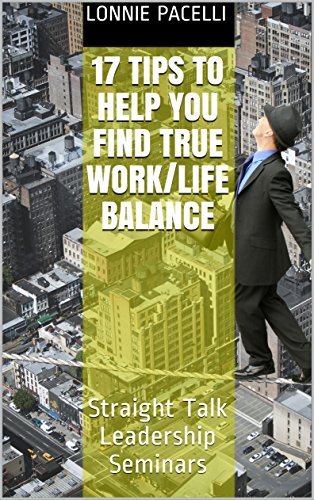 Free 2/6-7 - 17 Tips to Help You Find True Work Life Balance. Get it at https://amzn.to/2DQiKOI.
Free 2/6-7 - 17 Tips to Help You Find True Work Life Balance. Get it at https://amzn.to/2DQiKOI. #freebook #worklifebalance #leadership #kindle #kindlefire #ebooks #ebook #Kindlefreebooks #Kindledeals #FREE #mustread #goodreads #greatreads #freebie #freebies #kindlebook
Published on February 04, 2019 09:15
February 1, 2019
Disability Inclusion: Is Your Board on Board?
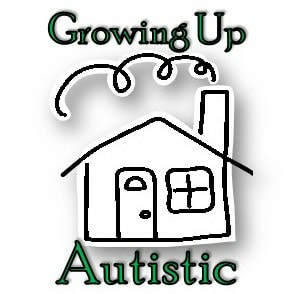 The Israeli Defense Force (IDF) Special intelligence Unit 9900 is dedicated to everything related to geography, including mapping, interpretation of aerial and satellite photographs, and space research. Within this unit there is another, smaller unit of highly qualified soldiers who can detect even the smallest details—the ones usually undetectable to most people.
The Israeli Defense Force (IDF) Special intelligence Unit 9900 is dedicated to everything related to geography, including mapping, interpretation of aerial and satellite photographs, and space research. Within this unit there is another, smaller unit of highly qualified soldiers who can detect even the smallest details—the ones usually undetectable to most people.These soldiers all have one thing in common; they are on the autism spectrum. Their job is to take visual materials from satellite images and sensors in the air. With the help of officers and decoding tools, they analyze the images and find specific objects within the images that are necessary to provide the best data to those planning missions. The IDF has also found that soldiers with autism can focus for longer periods of time than their neurotypical counterparts.
This story speaks to me personally. My son Trevor was diagnosed with autism at age five. The only thing I knew about autism at the time was Dustin Hoffman’s Rainman character. Raising a son on the spectrum drastically changed my point of view on disability inclusion, seeing strengths through the challenges, and cultivating those strengths while accommodating the challenges. He’s a grown man today, living on his own, working, paying his bills, saving money, and building relationships. His strengths outweigh his challenges.
The same reckoning with his strengths and challenges can lead to success with overseeing how an organization thrives, but how do you begin to ensure inclusion of disabled people’s strength in the workplace at scale with at an organization level? It has to start at the board and C-suite level.
The Center for Disease Control and Prevention defines a disability as “any condition of the body or mind (impairment) that makes it more difficult for the person with the condition to do certain activities (activity limitation) and interact with the world around them (participation restrictions).” A disability can:
Be present at birth (i.e. down syndrome)Become apparent during childhood (i.e. autism)Be related to an injury (i.e. spinal cord injury)Be associated with a longstanding condition (i.e. diabetes), which can cause a disability (i.e. vision loss).
In 2018 Accenture published an outstanding research report entitled Getting to Equal: The Disability Inclusion Advantage . Some of the statistics in the report are eye-opening:29 percent of working-age Americans with disabilities participate in the workforce compared with 75 percent of Americans without a disabilityThere are 15.1 million Americans of working age living with a disabilityIf companies embraced disability inclusion, they would gain access to a new talent pool of 10.7 million people.
The Disability Equality Index (DEI) is a joint project between the American Association of People with Disabilities and Disability:IN (formerly known as the US Business Leadership Network). DEI’s primary goal is to provide a benchmarking tool to help companies assess disability inclusion policies and practices in six key areas:Culture and LeadershipEnterprise-Wide AccessEmployment PracticesCommunity EngagementSupplier DiversityNon-US Operations
Organizations complete a survey (DEI estimates between 30-40 hours to complete), send it into DEI, and receive an objective score on their disability inclusion practices and opportunities for improvement. DEI puts respondents achieving 80 percent or better on their website, with companies like Accenture, Microsoft Corp., AT&T, The Walt Disney Co., Capital One Financial Corp., and Boeing Co. achieving a score of 100 percent. DEI has an advisory committee comprised of corporate and nonprofit executives and advocates who advise on benchmarking topics and questions.
While it’s a commitment to complete the survey, it gives an organization an honest and introspective lens into their culture, policies, and practices on disability inclusion and is valuable to help identify areas where an organization needs to improve.
This isn’t fluff stuff. The Accenture report notes several tangible results of those organizations that embraced a disability inclusion culture.Companies that were DEI disability champions (score of 80% or better) were twice as likely to have higher total shareholder returns than peer companies.Companies that weren’t disability champions but had improved their DEI scores over time were four times more likely to have higher total shareholder returns than peer companies.Staff turnover is up to 30 percent lower when a well-run disability community outreach program is in place.
As a board, make it a priority to work with the senior leadership team to understand your company’s disability inclusion position and ensure disability inclusion is baked into the culture, not just an add-on project. Here are three things you can do to get started:Use the DEI Benchmark Survey to assess your culture as-is. Whether or not you submit your responses to DEI for scoring, at a minimum, download and complete the survey to understand your company’s strengths and weaknesses on disability inclusion. You’ll at least get an understanding of where your company need to focus on the disability inclusion journey.Name a senior leadership disability inclusion champion. Identify and empower a member of your senior leadership team to be an internal and external-facing voice on disability inclusion for your organization. The executive should be known as a person with a disability or be a passionate supporter of people with disabilities. As with any other inclusion leader, passion is key. Don’t just give an exec the champion title if they’re not passionate about it.Put a disability inclusion advocate on your board. Whether a person with a disability or a passionate supporter, ensure your board has someone who brings both needed subject matter expertise coupled with a willingness to be a courageous disability inclusion advocate in the boardroom.
Disability inclusion is not just a social responsibility buzzword meant to enhance reputation. There’s tangible business value to be had. As a board, your accountability is to ensure your organization is promoting a culture where the business benefits can be realized.
Published on February 01, 2019 00:00
Disability Inclusion as Portrayed in The Lawless One and the End of Time
My fiction book, The Lawless One and the End of Time, has four main characters who meet at age 14 in Naples, Italy and all grow into globally-recognized figures. One of the characters, Bert Winn, was fascinated with history. He loved the concreteness of historical facts; they either happened or they didn’t. He met and fell in love with Laura, a math major he met in college. He graduated college with a Ph.D. in history and became an acclaimed professor. Bert and Laura married and had a son they named JT. The Winn family became internet celebrities and millions of people subscribed to their online video blog. Subscribers loved to hear their messages of fact, inspiration, and challenge. Their message? An unvarnished, inspirational view of life with Autism Spectrum Disorder.
Bert started showing signs of autism at eighteen months with speech delay, difficulty maintaining eye contact, and a dislike for being cuddled. As Bert grew, he and his mother developed strategies for how to accommodate some of Bert’s sensitivities, such as a “beach ball kiss,” in which an imaginary beach ball filled space between them when they kissed hello and goodbye. Laura too had sensory issues, particularly with clothing fabrics. The two of them learned to cope with their sensitivities through the years, so they became normal for them. It also felt normal for their son, JT, to be on the autism spectrum. They didn’t view themselves as people to be pitied, but used the opportunity to help others understand the world of autism and how people on the spectrum could thrive just like anyone. Their story educated and inspired millions and gave those affected by autism hope.
The story of Bert, Laura, and JT were heavily influenced by my wife Patty’s and my experience raising our son Trevor. He was diagnosed with Autism Spectrum Disorder at age five (the clinical diagnosis was Pervasive Developmental Disorder, Not Otherwise Specified or PDD-NOS) back in 1998. At the time, autism wasn’t well known and our only exposure to it was Dustin Hoffman’s character in Rainman. We had no idea what the future had in store for us as a family. Would he ever graduate high school? Would he drive? Would he have relationships? Through the years Trevor amazed us with what he was able to do and how he learned to cope with his autism. Today he is a college graduate who lives on his own, drives, works, and has an active social life. Yes, he has challenges that will be with him for the rest of his life. But we learned an important lesson with Trevor; the moment we underestimated him he proved us wrong.
You may have your own perceptions of people with disabilities, whether it be physical (paralysis), cognitive (autism), present at birth (Down Syndrome) or related to an injury (amputation due to an accident). Your perceptions may be due to personal experience, observing a friend or loved one, or what you see in the media. Your perceptions may be inclusive or biased. Only you can decide.
So, what’s your action? Educate yourself. Disability:IN, American Association of People with Disabilities, Special Books by Special Kids, Autism Speaks, Center for Disease Control and Prevention’s Disability and Health Overview, and Northwest Center are some great resources to help you better understand people with disabilities. Do your own web searches, just make sure the information you’re taking in is from credible sources.
Take the time to learn more about disabilities and focus less on the “dis” and more on “abilities.” Oh, and if you want to learn more about Bert, Laura and JT’s story, check out The Lawless One and the End of Time .
Bert started showing signs of autism at eighteen months with speech delay, difficulty maintaining eye contact, and a dislike for being cuddled. As Bert grew, he and his mother developed strategies for how to accommodate some of Bert’s sensitivities, such as a “beach ball kiss,” in which an imaginary beach ball filled space between them when they kissed hello and goodbye. Laura too had sensory issues, particularly with clothing fabrics. The two of them learned to cope with their sensitivities through the years, so they became normal for them. It also felt normal for their son, JT, to be on the autism spectrum. They didn’t view themselves as people to be pitied, but used the opportunity to help others understand the world of autism and how people on the spectrum could thrive just like anyone. Their story educated and inspired millions and gave those affected by autism hope.
The story of Bert, Laura, and JT were heavily influenced by my wife Patty’s and my experience raising our son Trevor. He was diagnosed with Autism Spectrum Disorder at age five (the clinical diagnosis was Pervasive Developmental Disorder, Not Otherwise Specified or PDD-NOS) back in 1998. At the time, autism wasn’t well known and our only exposure to it was Dustin Hoffman’s character in Rainman. We had no idea what the future had in store for us as a family. Would he ever graduate high school? Would he drive? Would he have relationships? Through the years Trevor amazed us with what he was able to do and how he learned to cope with his autism. Today he is a college graduate who lives on his own, drives, works, and has an active social life. Yes, he has challenges that will be with him for the rest of his life. But we learned an important lesson with Trevor; the moment we underestimated him he proved us wrong.
You may have your own perceptions of people with disabilities, whether it be physical (paralysis), cognitive (autism), present at birth (Down Syndrome) or related to an injury (amputation due to an accident). Your perceptions may be due to personal experience, observing a friend or loved one, or what you see in the media. Your perceptions may be inclusive or biased. Only you can decide.
So, what’s your action? Educate yourself. Disability:IN, American Association of People with Disabilities, Special Books by Special Kids, Autism Speaks, Center for Disease Control and Prevention’s Disability and Health Overview, and Northwest Center are some great resources to help you better understand people with disabilities. Do your own web searches, just make sure the information you’re taking in is from credible sources.
Take the time to learn more about disabilities and focus less on the “dis” and more on “abilities.” Oh, and if you want to learn more about Bert, Laura and JT’s story, check out The Lawless One and the End of Time .
Published on February 01, 2019 00:00
How an Autistic Child Has Changed A Career…For The Better - 12 years later
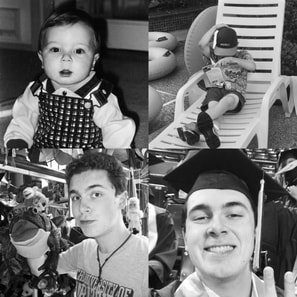 This is part two of How an Autistic Child has Changed a Career…For the Better
This is part two of How an Autistic Child has Changed a Career…For the Better
In 2006 I wrote of Patty’s and my decision to homeschool our son Trevor to help provide a learning environment more conducive with his autism. It’s now twelve years later and time to write about how things worked out.
Trevor started seventh grade with a customized schooling plan. Patty focused on arts and language and I focused on math and science. He also attended a homeschool-assisted school which provided English and math classes and attended a science class at the middle school he would have normally attended. The curriculum plan was designed by Patty and me along with Trevor’s school counselor. It was a hybrid of homeschooling and traditional schooling which we felt gave Trevor the best likelihood of success. Trevor’s counselor was completely awesome in working with us and putting Trevor’s well-being first. The blended teaching worked very well in seventh grade, but we also noticed that Trevor wasn’t getting enough peer socialization. In eighth grade we decided to start the process of mainstreaming him back into the public-school system. Patty continued focus on arts and language and math and science topics were now being provided by Trevor’s middle school. I like to joke that I was fired as a homeschool teacher and that my wife and son did the firing. In reality the mainstreaming was the right answer because it allowed him to get needed socialization through spending more time at school while also giving him some additional 1:1 focus through homeschooling. In ninth grade we felt Trevor was ready to be fully mainstreamed into the public-school system. While we packed up our homeschool materials, our involvement with Trevor’s schooling and socialization growth was still strong.
Ninth through 12th grade brought some high points but also brought a lot of struggle. Trevor was bullied and made fun of by many other students who took advantage of his autism. He had difficulty telling the difference between kids mocking him versus being a friend. Because he was behind his peers in his social interaction skills, he would say and do things that weren’t appropriate. He did have a few close friends who were genuine in their friendship, some of which he is still friends with today. One bright spot through high school was Trevor’s involvement in drama club. He participated in many performances both on stage and behind the scenes. The drama club was his “clique”, and while some in the club took advantage of Trevor’s autism, many accepted and looked out for him.
Trevor graduated from high school in 2011 with plans to go to college. Feeling that the jump from high school to a large university would be too drastic for him, he attended a local junior college for two years while living at home. He had developed a love for movies and photography, so he decided to major in film studies with an emphasis in photography. These two years were foundational for Trevor’s growth in that he continued to progress academically while also allowing him to work on socialization and adaptation skills. In his sophomore year he decided he wanted to transfer to a four-year university majoring in film and media studies. His decision on where to go was an outstanding example of decision making through empirical data analysis and pros/cons articulation. He developed a visibility board with xx decision criteria including offering of major, closeness of family, and church offerings. He narrowed his choice down to two colleges, Central Washington University and Arizona State University, both of which meant he would be living away from home. He ultimately decided on Arizona State, comfortable through his analysis that this was the best option. It was also during this time that Trevor wrote about his experiences growing up with autism in Six-Word Lessons on Growing Up Autistic.
In August 2013 we took Trevor to the ASU Tempe campus, helped him set up his dorm room, and left him to start his junior year of college. While it was a bit unnerving being a thousand miles away from him, we had peace in knowing there were a number of family members in the area including Trevor’s big sister Briana who was now a nurse in nearby Scottsdale. His last two years of school were those of tremendous growth. He had to figure out a lot of things on his own, make new friends, and be responsible for his own studies. Fortunately, he plugged into a church group that was walking distance from ASU. He fit in like a glove and the church group was a high point of his time at ASU. He got to experience living and dealing with roommates, most of which he felt were too immature for him. We got several problem calls when he lost his wallet, had computer problems, or was having difficulty coping with some situations. He graduated from ASU in December 2015 Cum Laude with a degree in Film & Media Studies.
His post-college life was filled with a lot of anxiety. Now he was out of school and it was time to support himself. He didn’t have a job upon graduation, so Patty and I decided to hire him into our company as our Media Director. He was employed by us for 17 months where we got to help him build good work habits. We instituted a monthly review process called “dones” where at the beginning of the month he would lay out what he would have done by the end of the month, which we would then review at the beginning of the next month. It was an outstanding process in that all three of us were aligned as to what he needed to do, and he was held accountable for getting things done. In July 2017 Trevor was hired by Northwest Center where he splits his time between facilities management and marketing. His marketing assignments have been fruitful, including being interviewed by two local TV news stations.
Today Trevor is 26. He lives on his own in a condo we purchased for him along with two other tenants on the autism spectrum. He pays rent, he manages his own money, he is as self sufficient as any 26-year-old. He’s still got some challenges that he’ll continue to have for the rest of his life. He’ll always need someone else to help coach him through situations. It was a lot of hard work on all our parts, but Patty and I are excited about his future and are grateful that we were in a position to help Trevor.
Published on February 01, 2019 00:00
January 28, 2019
Free 1/30-31 - 17 Tips for Better Team Building Offsites
 Free 1/30-31 - 17 Tips for Better Team Building Offsites. Get it at https://amzn.to/2FwzKeM.
Free 1/30-31 - 17 Tips for Better Team Building Offsites. Get it at https://amzn.to/2FwzKeM.#freebook #teamwork #leadership #kindle #kindlefire #ebooks #ebook #Kindlefreebooks #Kindledeals #FREE #mustread #goodreads #greatreads #freebie #freebies #kindlebook
Published on January 28, 2019 00:00
January 21, 2019
Free 1/23-24: 16 Tips to Become a Best-in-Class Mentor
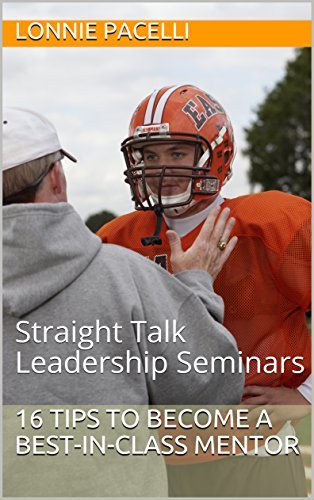 Free 1/23-24: 16 Tips to Become a Best-in-Class Mentor Get it at https://amzn.to/2DPYAET
Free 1/23-24: 16 Tips to Become a Best-in-Class Mentor Get it at https://amzn.to/2DPYAET#freebook #teamwork #leadership #mentor #kindle #kindlefire #ebooks #ebook #Kindlefreebooks #Kindledeals #FREE #mustread #goodreads #greatreads #freebie #freebies #kindlebook
Published on January 21, 2019 08:04
January 14, 2019
Free 1/16-17: 15 Tips to Keep Your Business on Track
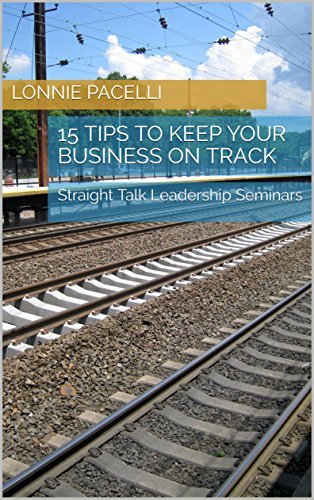 Free 1/16-17: 15 Tips to Keep Your Business on Track. Get it at https://amzn.to/2FxF3L0
Free 1/16-17: 15 Tips to Keep Your Business on Track. Get it at https://amzn.to/2FxF3L0#freebook #entrepreneur #startup #kindle #kindlefire #ebooks #ebook #Kindlefreebooks #Kindledeals #FREE #mustread #goodreads #greatreads #freebie #freebies #kindlebook
Published on January 14, 2019 07:34
January 7, 2019
Free 1/10-11 Only: 14 Tips to Unify Your Team to Drive Results
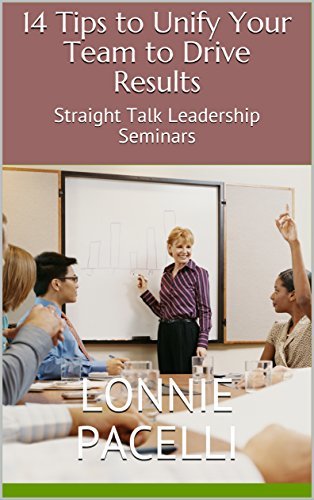 Free 1/10-11 Only: 14 Tips to Unify Your Team to Drive Results. Get it at https://amzn.to/2ToVs7r
Free 1/10-11 Only: 14 Tips to Unify Your Team to Drive Results. Get it at https://amzn.to/2ToVs7r#freebook #teamwork #leadership #kindle #kindlefire #ebooks #ebook #Kindlefreebooks #Kindledeals #FREE #mustread #goodreads #greatreads #freebie #freebies #kindlebook
Published on January 07, 2019 09:08



